Kalina Yacef
Transfer Learning in Conversational Analysis through Reusing Preprocessing Data as Supervisors
Dec 02, 2021



Abstract:Conversational analysis systems are trained using noisy human labels and often require heavy preprocessing during multi-modal feature extraction. Using noisy labels in single-task learning increases the risk of over-fitting. Auxiliary tasks could improve the performance of the primary task learning during the same training -- this approach sits in the intersection of transfer learning and multi-task learning (MTL). In this paper, we explore how the preprocessed data used for feature engineering can be re-used as auxiliary tasks, thereby promoting the productive use of data. Our main contributions are: (1) the identification of sixteen beneficially auxiliary tasks, (2) studying the method of distributing learning capacity between the primary and auxiliary tasks, and (3) studying the relative supervision hierarchy between the primary and auxiliary tasks. Extensive experiments on IEMOCAP and SEMAINE data validate the improvements over single-task approaches, and suggest that it may generalize across multiple primary tasks.
ast2vec: Utilizing Recursive Neural Encodings of Python Programs
Mar 22, 2021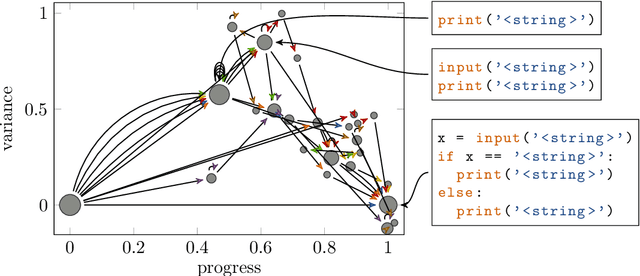
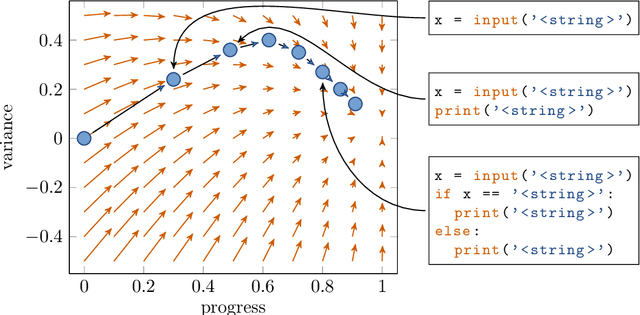
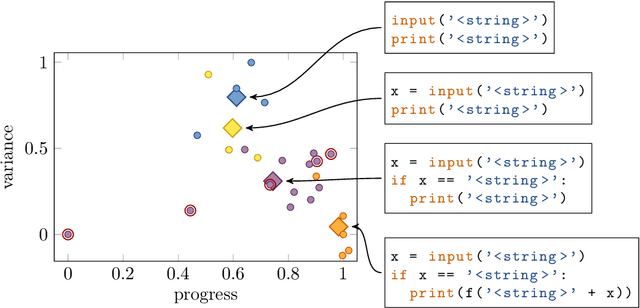
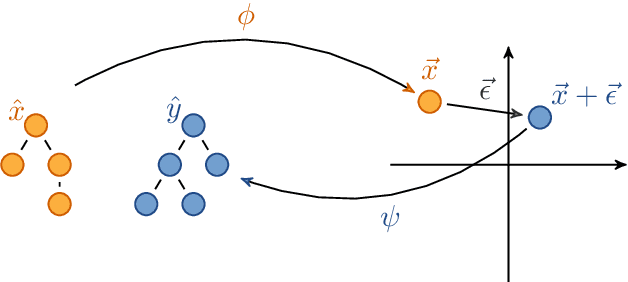
Abstract:Educational datamining involves the application of datamining techniques to student activity. However, in the context of computer programming, many datamining techniques can not be applied because they expect vector-shaped input whereas computer programs have the form of syntax trees. In this paper, we present ast2vec, a neural network that maps Python syntax trees to vectors and back, thereby facilitating datamining on computer programs as well as the interpretation of datamining results. Ast2vec has been trained on almost half a million programs of novice programmers and is designed to be applied across learning tasks without re-training, meaning that users can apply it without any need for (additional) deep learning. We demonstrate the generality of ast2vec in three settings: First, we provide example analyses using ast2vec on a classroom-sized dataset, involving visualization, student motion analysis, clustering, and outlier detection, including two novel analyses, namely a progress-variance-projection and a dynamical systems analysis. Second, we consider the ability of ast2vec to recover the original syntax tree from its vector representation on the training data and two further large-scale programming datasets. Finally, we evaluate the predictive capability of a simple linear regression on top of ast2vec, obtaining similar results to techniques that work directly on syntax trees. We hope ast2vec can augment the educational datamining toolbelt by making analyses of computer programs easier, richer, and more efficient.
MONAH: Multi-Modal Narratives for Humans to analyze conversations
Jan 20, 2021
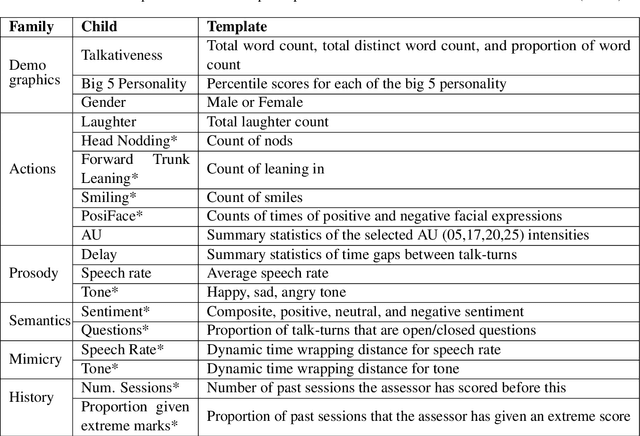
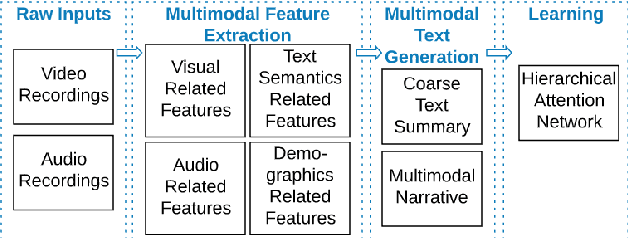
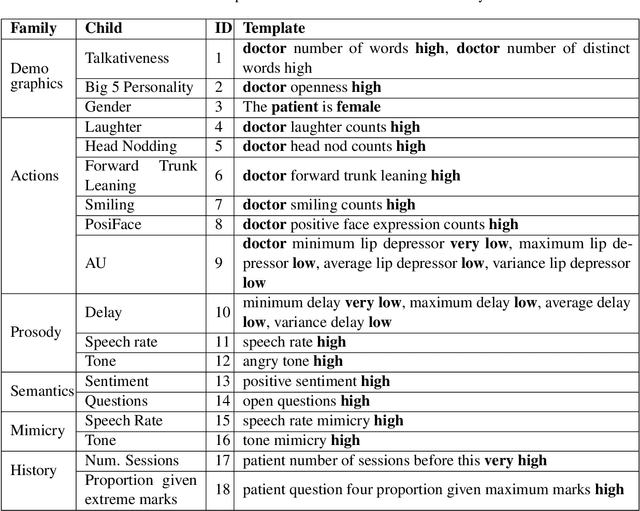
Abstract:In conversational analyses, humans manually weave multimodal information into the transcripts, which is significantly time-consuming. We introduce a system that automatically expands the verbatim transcripts of video-recorded conversations using multimodal data streams. This system uses a set of preprocessing rules to weave multimodal annotations into the verbatim transcripts and promote interpretability. Our feature engineering contributions are two-fold: firstly, we identify the range of multimodal features relevant to detect rapport-building; secondly, we expand the range of multimodal annotations and show that the expansion leads to statistically significant improvements in detecting rapport-building.
Recursive Tree Grammar Autoencoders
Dec 15, 2020



Abstract:Machine learning on tree data has been mostly focused on trees as input. Much less research has investigates trees as output, like in molecule optimization for drug discovery or hint generation for intelligent tutoring systems. In this work, we propose a novel autoencoder approach, called recursive tree grammar autoencoder (RTG-AE), which encodes trees via a bottom-up parser and decodes trees via a tree grammar, both controlled by neural networks that minimize the variational autoencoder loss. The resulting encoding and decoding functions can then be employed in subsequent tasks, such as optimization and time series prediction. RTG-AE combines variational autoencoders, grammatical knowledge, and recursive processing. Our key message is that this combination improves performance compared to only combining two of these three components. In particular, we show experimentally that our proposed method improves the autoencoding error, training time, and optimization score on four benchmark datasets compared to baselines from the literature.
DETECT: A Hierarchical Clustering Algorithm for Behavioural Trends in Temporal Educational Data
May 04, 2020
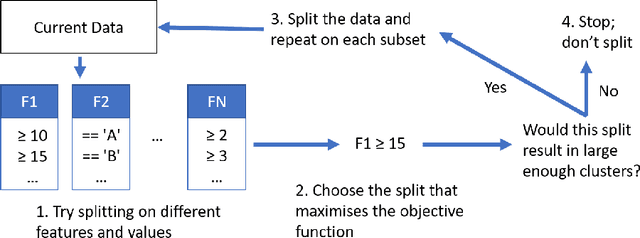


Abstract:Techniques for clustering student behaviour offer many opportunities to improve educational outcomes by providing insight into student learning. However, one important aspect of student behaviour, namely its evolution over time, can often be challenging to identify using existing methods. This is because the objective functions used by these methods do not explicitly aim to find cluster trends in time, so these trends may not be clearly represented in the results. This paper presents `DETECT' (Detection of Educational Trends Elicited by Clustering Time-series data), a novel divisive hierarchical clustering algorithm that incorporates temporal information into its objective function to prioritise the detection of behavioural trends. The resulting clusters are similar in structure to a decision tree, with a hierarchy of clusters defined by decision rules on features. DETECT is easy to apply, highly customisable, applicable to a wide range of educational datasets and yields easily interpretable results. Through a case study of two online programming courses (N>600), this paper demonstrates two example applications of DETECT: 1) to identify how cohort behaviour develops over time and 2) to identify student behaviours that characterise exercises where many students give up.
Tree Echo State Autoencoders with Grammars
Apr 19, 2020



Abstract:Tree data occurs in many forms, such as computer programs, chemical molecules, or natural language. Unfortunately, the non-vectorial and discrete nature of trees makes it challenging to construct functions with tree-formed output, complicating tasks such as optimization or time series prediction. Autoencoders address this challenge by mapping trees to a vectorial latent space, where tasks are easier to solve, and then mapping the solution back to a tree structure. However, existing autoencoding approaches for tree data fail to take the specific grammatical structure of tree domains into account and rely on deep learning, thus requiring large training datasets and long training times. In this paper, we propose tree echo state autoencoders (TES-AE), which are guided by a tree grammar and can be trained within seconds by virtue of reservoir computing. In our evaluation on three datasets, we demonstrate that our proposed approach is not only much faster than a state-of-the-art deep learning autoencoding approach (D-VAE) but also has less autoencoding error if little data and time is given.
Detecting depression in dyadic conversations with multimodal narratives and visualizations
Jan 27, 2020



Abstract:Conversations contain a wide spectrum of multimodal information that gives us hints about the emotions and moods of the speaker. In this paper, we developed a system that supports humans to analyze conversations. Our main contribution is the identification of appropriate multimodal features and the integration of such features into verbatim conversation transcripts. We demonstrate the ability of our system to take in a wide range of multimodal information and automatically generated a prediction score for the depression state of the individual. Our experiments showed that this approach yielded better performance than the baseline model. Furthermore, the multimodal narrative approach makes it easy to integrate learnings from other disciplines, such as conversational analysis and psychology. Lastly, this interdisciplinary and automated approach is a step towards emulating how practitioners record the course of treatment as well as emulating how conversational analysts have been analyzing conversations by hand.
* 12 pages
A Survey of Automated Programming Hint Generation -- The HINTS Framework
Aug 30, 2019
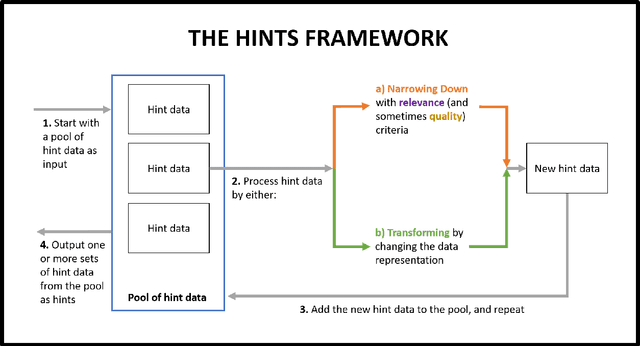
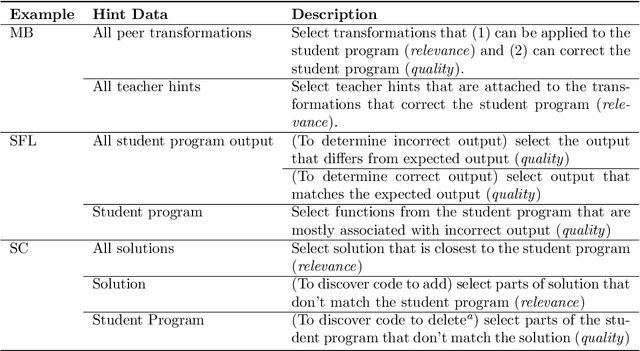
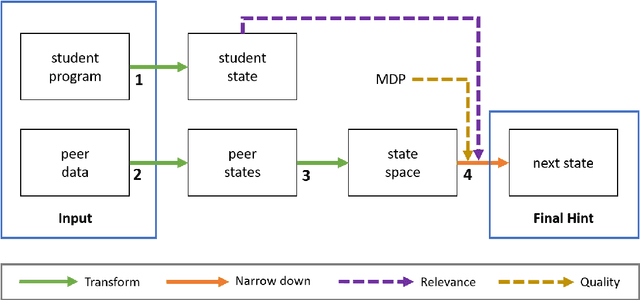
Abstract:Automated tutoring systems offer the flexibility and scalability necessary to facilitate the provision of high quality and universally accessible programming education. In order to realise the full potential of these systems, recent work has proposed a diverse range of techniques for automatically generating hints to assist students with programming exercises. This paper integrates these apparently disparate approaches into a coherent whole. Specifically, it emphasises that all hint techniques can be understood as a series of simpler components with similar properties. Using this insight, it presents a simple framework for describing such techniques, the Hint Iteration by Narrow-down and Transformation Steps (HINTS) framework, and it surveys recent work in the context of this framework. It discusses important implications of the survey and framework, including the need to further develop evaluation methods and the importance of considering hint technique components when designing, communicating and evaluating hint systems. Ultimately, this paper is designed to facilitate future opportunities for the development, extension and comparison of automated programming hint techniques in order to maximise their educational potential.
 Add to Chrome
Add to Chrome Add to Firefox
Add to Firefox Add to Edge
Add to Edge